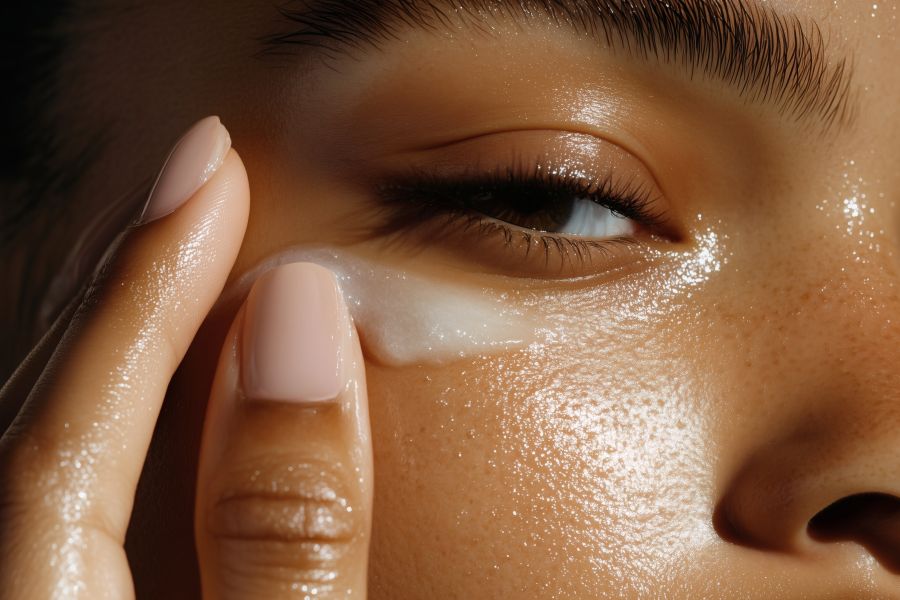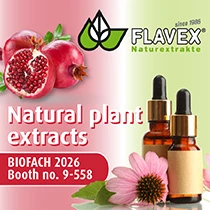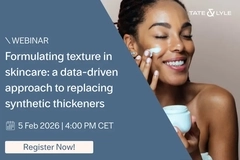Evolution of eye care: Surgeon backs Optase’s safe and sensitive solution

Scope Eyecare has launched the Sensitive Eye Daily Renewal Cream to offer consumers a cleaner, safer solution for dry and sensitive eyes. The eye care brand reports that almost 60% of UK women experience weekly eye discomfort, such as dryness, sensitivity, watering, and itchiness. Yet, 75% continue to wear eye makeup and mascara regularly.
The cream, added to the existing Optase Life range, was designed to be gentle, with 13 advanced, clean ingredients — including patented ionized water, glycerin, and vitamin E. Additionally, it is fragrance-, preservative-, and phosphate-free to minimize irritation and help reduce itching, dryness, and redness around the eyes.
Dermatologists and ophthalmologists have approved the product, claiming it hydrates, soothes, and protects the delicate skin around the eye area for 48 hours, while repairing the skin barrier and reducing fine lines.
Personal Care Insights speaks to consultant ophthalmic surgeon Dr. Elizabeth Hawkes, at the Cadogan Clinic in London, UK, about how consumers’ eye care needs are shaping the market and how the Optase Life Sensitive Eye Daily Renewal formula meets the growing demand for cleaner, sensitivity-conscious skin care solutions.
What are patients’ most common concerns about eye sensitivity and the skin around the eyes?
Hawkes: The skin on the eyelids is fragile and delicate, and it’s subjected to a great deal of mechanical stress. Directly beneath it lies the orbicularis oculi muscle responsible for blinking. We blink around 15,000 times daily, so the eyelid skin is constantly in motion. Because of this, it is susceptible to early aging. For that reason, many patients are now seeking dedicated eye creams.
 The Optase Sensitive Eye Daily Renewal Cream has been patented ionized water technology.Sensitive eyes are usually associated with ocular surface and dry eye disruption. When your eyes are dry, the lacrimal gland produces more tears to increase lubrication, so patients with dry eye syndrome often experience watery eyes. In more severe cases, this can even lead to blurred vision. Other common concerns include allergies. Symptoms typically worsen with hay fever, dust, and pollen triggers. These issues can also lead to more aesthetic problems, such as puffiness and the development of eye bags due to the increased itching and rubbing of the eyes. The eyeballs sit in bony sockets cushioned by fat held back by a fragile fibrous structure called the septum. Over time, excess rubbing can cause the septum to weaken, pushing this fat forward and causing visible puffiness.
The Optase Sensitive Eye Daily Renewal Cream has been patented ionized water technology.Sensitive eyes are usually associated with ocular surface and dry eye disruption. When your eyes are dry, the lacrimal gland produces more tears to increase lubrication, so patients with dry eye syndrome often experience watery eyes. In more severe cases, this can even lead to blurred vision. Other common concerns include allergies. Symptoms typically worsen with hay fever, dust, and pollen triggers. These issues can also lead to more aesthetic problems, such as puffiness and the development of eye bags due to the increased itching and rubbing of the eyes. The eyeballs sit in bony sockets cushioned by fat held back by a fragile fibrous structure called the septum. Over time, excess rubbing can cause the septum to weaken, pushing this fat forward and causing visible puffiness.
Other aesthetic concerns include redness of the surrounding skin, an overall tired appearance, and the feeling that the skin around the eyes is aging quickly.
How have you seen consumer needs shift regarding eye care and eye-area skin care in recent years?
Hawkes: Over the last few years, patients have become more aware of the importance of eye health and how delicate the eye area is. The COVID-19 pandemic played a significant role in this shift, as people began using their eyes more than ever, mainly through increased screen time and wearing masks, which brought more focus to the eye area.
Additionally, there is a rising interest in ways to slow down the aging process around the eyes because the eyes are often the first part of the face to show signs of aging.
How does the Sensitive Eye Daily Renewal Cream product meet the consumers’ eye care needs?
Hawkes: Because the eyelid skin is so delicate, many patients have sensitivities to standard over-the-counter eye creams. Patients with conditions such as dermatitis, rosacea, and eczema also commonly struggle with eye creams, as their skin is more sensitive in the eye area. There’s a gap in the market for an eye cream created by an ophthalmic brand, specifically tailored to these concerns.
From a medical perspective, what makes a formulation “safe” for the eye area?
Hawkes: Most importantly, it should be non-toxic to the ocular surface or the cornea, so avoid excessive preservatives such as benzalkonium chloride. A low-migration formula means it won’t quickly move into the eye, which could cause increased sensitivity and irritation.
Formulations should be non-comedogenic. If not, we see cases of milia, where eye creams clog the pores and cause tiny white bumps around the eye area. Additionally, it should have minimal to no fragrance to avoid irritation and be hypoallergenic to minimize the risk of allergic reactions. Ophthalmologists claim Optase's eye cream product hydrates, soothes, and protects the delicate area under the eyes.
Ophthalmologists claim Optase's eye cream product hydrates, soothes, and protects the delicate area under the eyes.
Clinical studies have shown the Sensitive Eye Daily Renewal Cream does not affect the ocular surface, as measured by tear film breakup time. Tear film breakup time is a sensitive test done in clinics to check for dry eye. A drop of fluorescein, an orange dye, is put into the eye. Then a blue light is shone, and after blinking, the time it takes for the tears to evaporate off the ocular surface is measured. Healthy individuals typically take about 10 seconds, while patients with severe dry eye may take only two to three seconds.
Why is the product’s patented ionized water technology important?
Hawkes: Harsh surfactants used around the eyelid can remove makeup and debris, but may also irritate the delicate skin in that area. Yes, they work, but they can also strip the lipid layer, which, if disrupted, can worsen sensitive eyes and cause dry eye over time.
The patented ionized water technology uses ionized water to repel the particles from the eyelid’s surface, providing an alternative to harsh surfactants. This technology is highly effective. It also provides relief to patients with sensitive eyes and blepharitis, an inflammatory condition of the eyelid.
How do you see the trend for minimalist formulations influencing the future of eye care?
Hawkes: Looking ahead, skin care brands will want to use as many natural ingredients as possible, and reduce preservatives to back hypoallergenic claims because of the growing awareness of how products interact with the eyes and the delicacy of the surrounding skin. The key is that ingredients must be safe for the ocular surface. A plant-based lipid would work well.
It’s also encouraging to see that many brands are now seeking ophthalmic endorsement, not just dermatology approval, because the eye, especially the cornea, needs to be considered when ensuring product safety.













